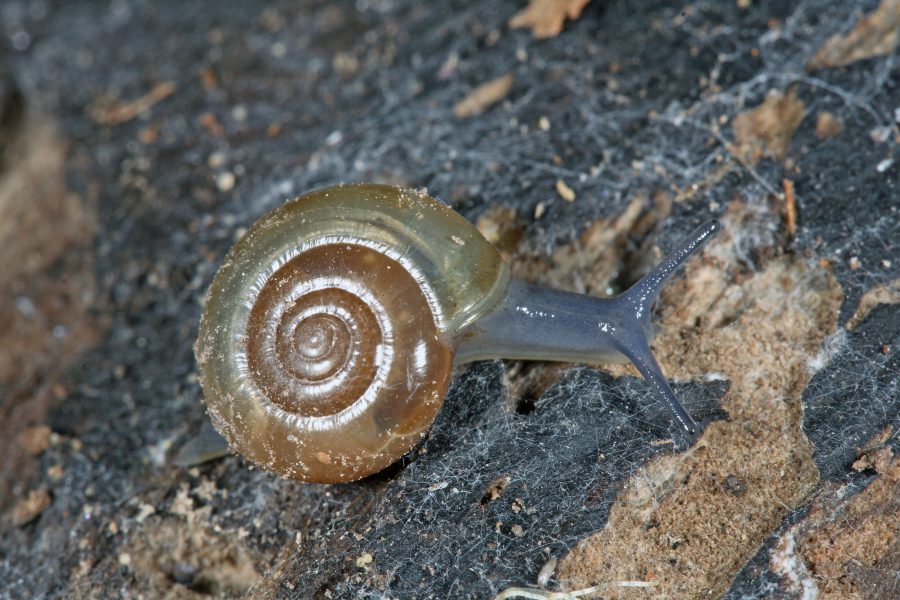
Cellar Glass-snail - Cave Animal of the Year 2015
Introduction
The Cellar Glass-snail (Oxychilus cellarius) belongs to the Stylommatophora, i.e. air-breathing land snails and slugs. It was first described in the year 1774 by the Danish naturalist Otto Friedrich Müller. The animals are living all year round in natural caves, mining tunnels and rock cellars. For this reason, the snail has been chosen as the Cave Animal of the Year 2015. This snail represents a large number of species, which are depending on caves as sheltered and frost-free refuges.
The Verband der deutschen Höhlen- und Karstforscher e.V. (German Speleological Society) has chosen the Cave Animal of the Year to point out the immense deficiencies in the research of subterranean ecosystems and their associated faunas.
Description
The Cellar Glass-snail inhabits shady and humid places. It occurs in forests, bushes, between rocks and in gardens. It is also commonly found in natural caves, mining tunnels and rock cellars. Here, the species forms stable cave populations, which are spread far into the dark zone. The species feeds on rotting plant material and algae, but can also be a predator and feed on other snails and their eggs. In caves, the Cellar Glass-snail has been observed to devour overwintering moths. The life span of this snail is up to about 12 to 14 months.
The shell of the Cellar Glass-snail is usually up to 11 mm in diameter and nearly disk-like, with a slightly raised thread. It has five to six threads, which are moderately increasing in size. The shell navel at the lower side is funnel-shaped and open. The surface is nearly smooth and shining. The upper side of the shell is translucent and greyish-yellow, the lower side significantly paler and yellowish. The body is grey-blue, the foot a light grey.
Distribution
The natural distribution of the Cellar Glass-snail encompasses Western-, Middle- and Northern Europa. The eastern border runs through Poland and Slovakia. In Scandinavia, the snail is restricted to coastal areas. The species prefers altitudes between 300 and 800 m a.s.l. The highest occurrence in the Alps is at around 1.800 m a.s.l. In all German cave areas, the Cellar Glass-snail is regularly found below ground.



